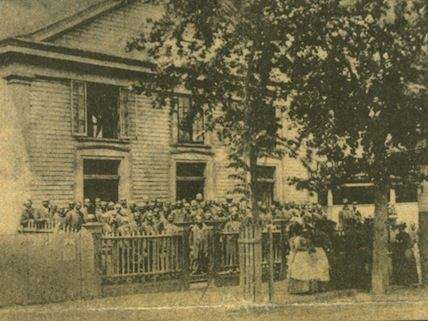The Context of the Church Massacre
The Emanuel African Methodist Episcopal Church and the role it has played in Charleston

The murder of nine people is going to make people sad and angry in any context. Those feelings are sure to be intensified when the massacre takes place in a black church and the killer is a white man who reportedly told his victims, "You rape our women and you're taking over our country." Last night's assault in Charleston has the added weight of taking place two months after a white cop in neighboring North Charleston was charged with murdering a black man, Walter Scott, setting off a renewed wave of civil rights activism in the area.
On top of all that, this church itself plays a central role in Charleston's black community, and it has for a long time. The Emanuel African Methodist Episcopal Church's current building was erected in 1891, and the congregation has been around formally since 1865. It traces its roots back still earlier, to a church co-founded in 1816 by Denmark Vesey, who would eventually be hanged for allegedly plotting a slave revolt. (Reports of the Vesey plot set off one of the most infamous insurrection panics of the antebellum era, with over 100 suspected conspirators arrested and 35 executed.) When Charleston banned all-black churches, the congregation supposedly dissolved; but some of the worshippers continued to meet in secret, and the current church sees itself as a direct descendant of Vesey's original congregation.
Whether or not the shooter knew any of that history, there certainly are a lot of black Charlestonians who know it. They also know that a pastor killed in the attack—State Sen. Clementa Pinckney—has his own history of civil rights activism, most recently reacting to Walter Scott's death with a push for South Carolina cops to wear body cameras. I've heard the phrases "mass shooting" and "hate crime" a lot since last night; don't be surprised if "assassination" is added to the mix.


Show Comments (26)